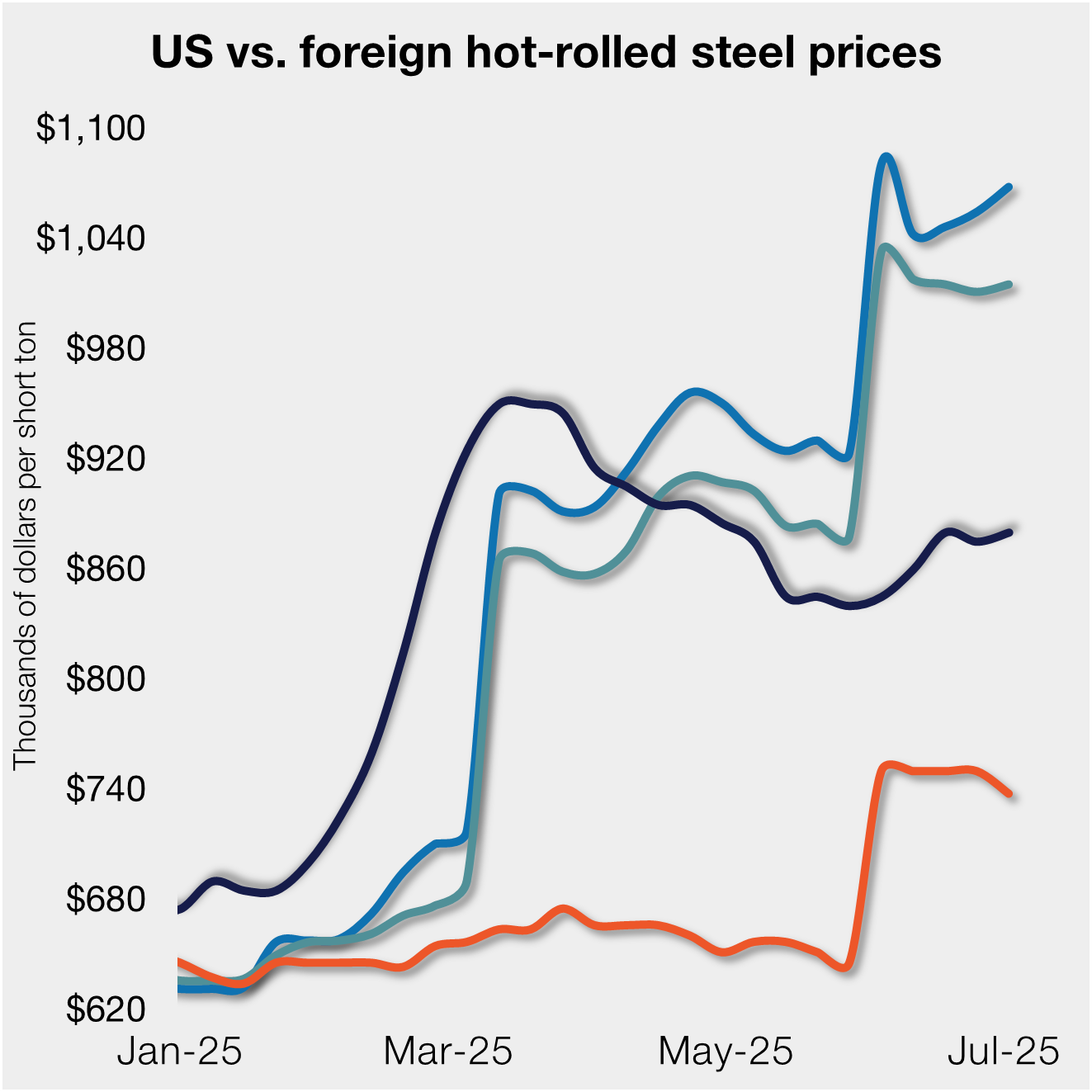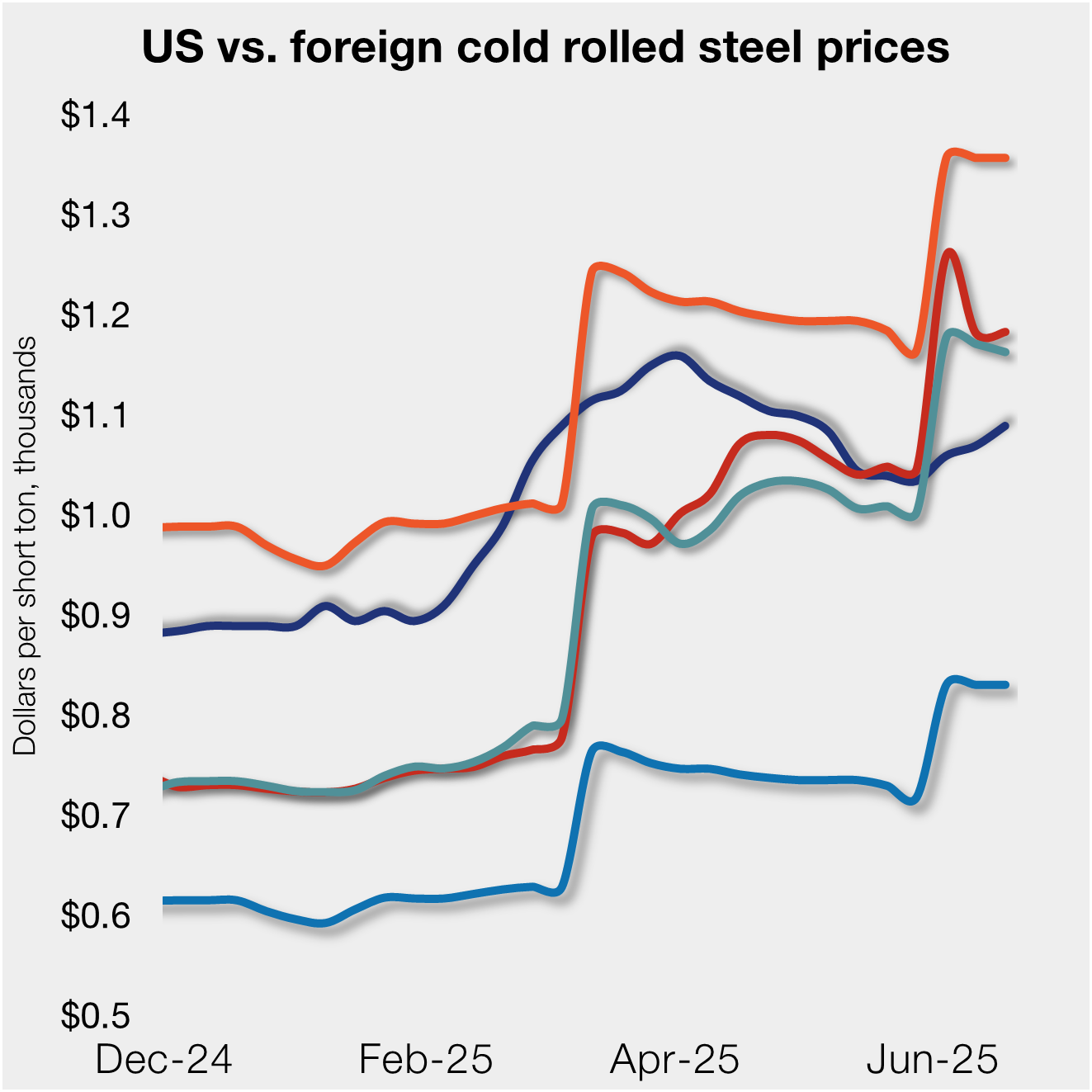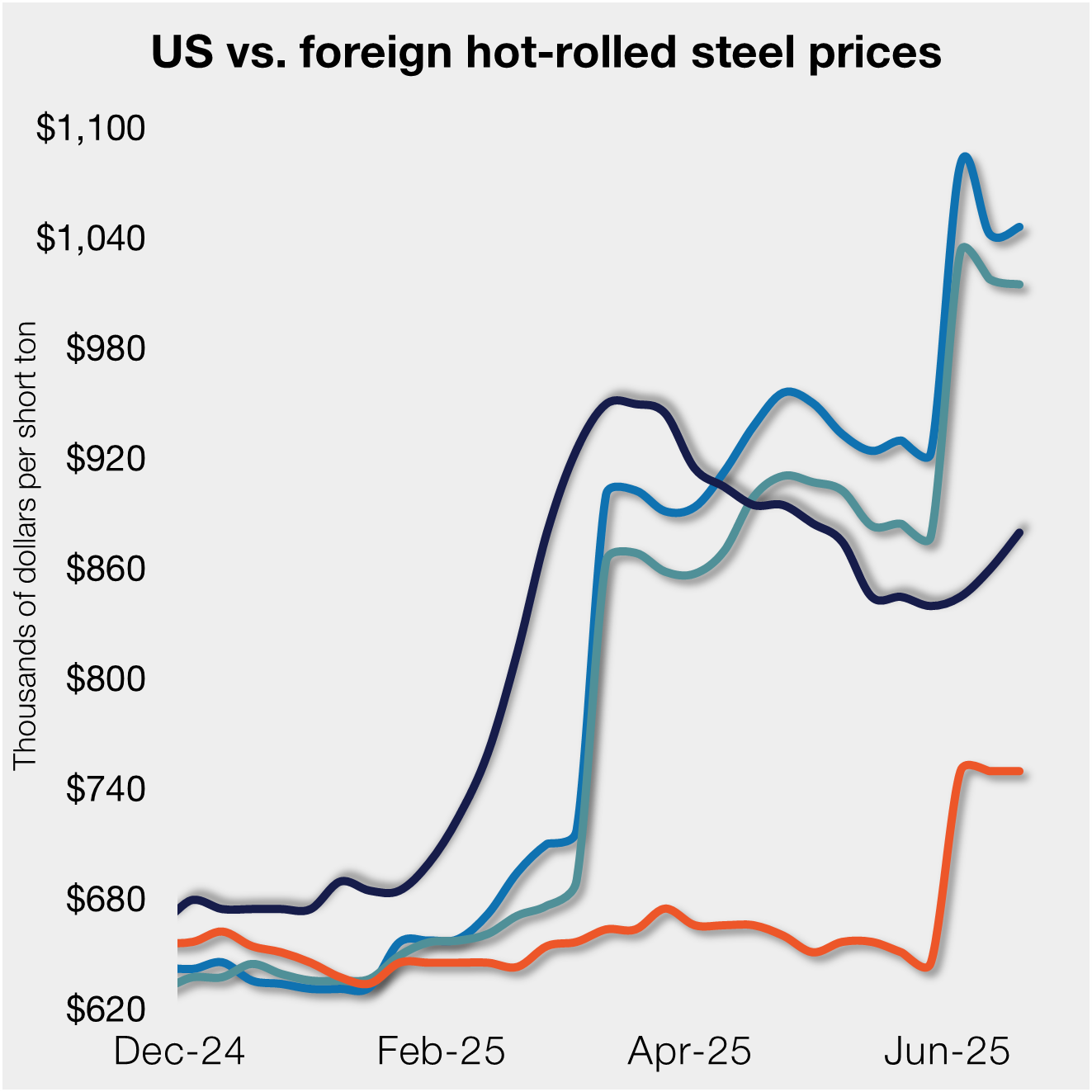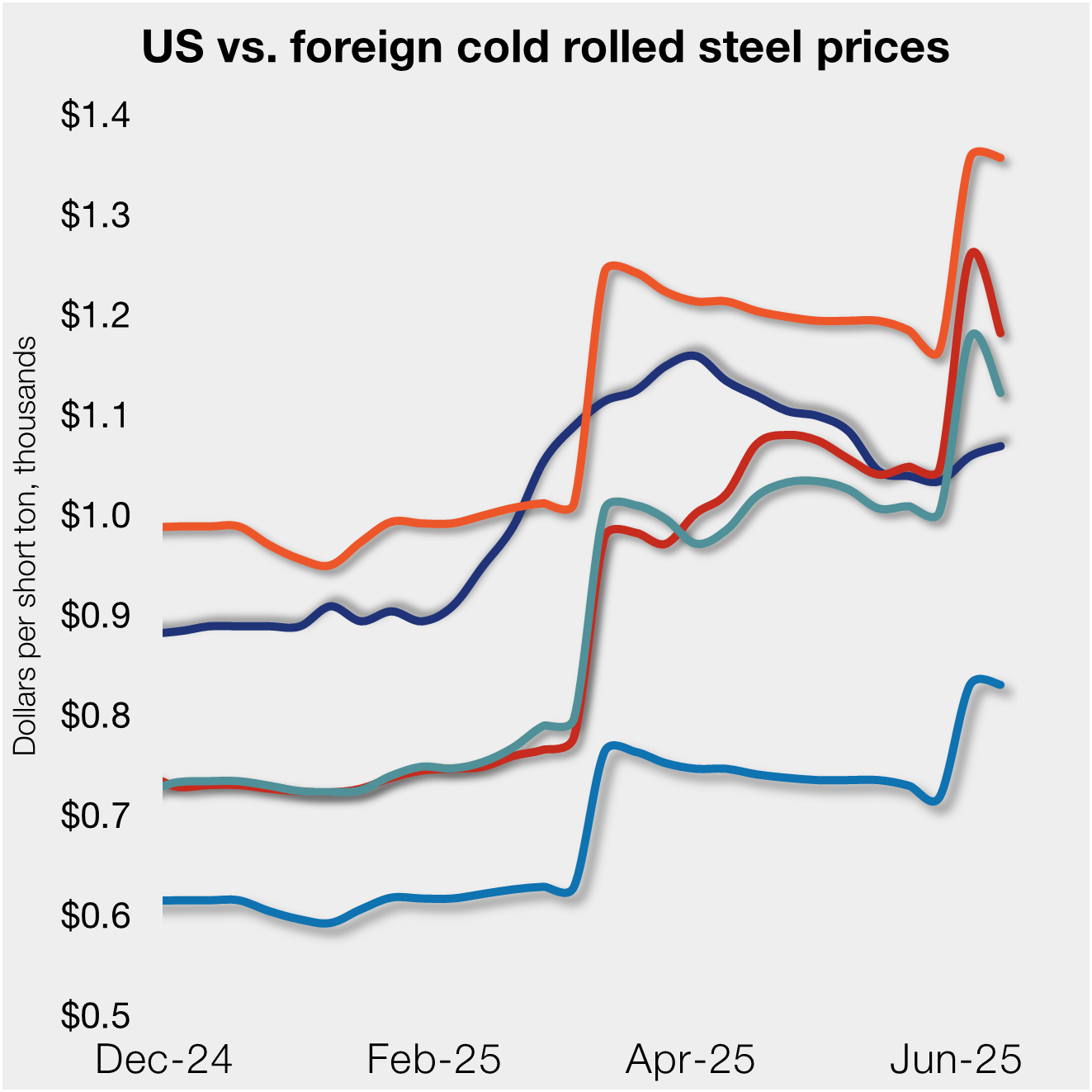International Steel Prices

Analysis of World Export vs. Domestic Hot Rolled Coil Price Spread
Written by Brett Linton
April 30, 2015
The spread between world hot rolled export pricing and that of the domestic average here in the United States continues to be reduced from what we were measuring a couple of months ago. This analysis is based on our review of world export prices and the hot rolled index produced by SMU earlier this week. As the spread narrows, the competitiveness of imported steel into the United States is reduced. Over time, if the trend continues, the domestic (U.S. and Canadian) steel mills will be in a better position to regain some of the market share lost to foreign steel imports, especially on flat rolled steel products in the coming months (second half 2015).
The following calculation is used by Steel Market Update in order to identify the spread between world hot rolled export prices as determined by SteelBenchmarker and domestic (US) hot rolled prices determined by SMU. SMU compares the world hot rolled export price to which dollars are added for freight, handling, trader margin, etc. The number generated is then compared to the spot (FOB Mill) domestic hot rolled price using the SMU Hot Rolled Index average for this week, with the result being the spread between domestic and world hot rolled coil (HRC) pricing. This is a “theoretical” calculation as freight costs, trader margin and other costs can fluctuate.
We will discuss what we are actually seeing for foreign offers a little later in this article.
![]() The world export price for hot rolled bands is $354 per net ton ($390 per metric ton) FOB the port of export according to data released by SteelBenchmarker earlier this week. This is down $8 per ton from the previous release in mid-April and down $24 per ton from one month ago.
The world export price for hot rolled bands is $354 per net ton ($390 per metric ton) FOB the port of export according to data released by SteelBenchmarker earlier this week. This is down $8 per ton from the previous release in mid-April and down $24 per ton from one month ago.
SMU uses a minimum of $70 to as much as $100 per ton for freight, handling, and trader margin, which is then added to the export number in order to get the steel to ports in the United States. This puts our “theoretical” selling price for hot rolled coil exported to the United States as ranging from $424 to $452 per ton CIF USA Port.
The latest Steel Market Update hot rolled price average is $445 per ton for domestic steel; this is down $3 from mid-April and down $25 per ton from one month ago. The theoretical spread between the world HR export price and the SMU HR price is -$9 to $21 per ton ($91 prior to import costs), up $5 per ton from our previous analysis but down $3 from one month ago.
In our analysis, a positive price spread indicates foreign HR steel is cheaper than domestic steel, and a negative spread indicates that foreign steel is more expensive than domestic.
The -$9 to $21 spread is in line with the lower spreads we have seen over the past three months. The spread in early February of -$19 to $11 was the lowest seen since late-May 2013 when we had a spread of -$20 to $10 per ton ($80 prior to import costs). In 2014, the highest spread seen was in mid-May at $84 to $114 per ton ($184 prior to import costs). One year ago the spread was $73 to $103 per ton ($173 prior to import costs).
The above numbers are based on “theoretical” calculations. This is where we believe prices and price offers should be if the SteelBenchmarker world export number is correct.
SMU did a quick check of where foreign mills or their trading company partners are offering hot rolled steel coil for future delivery. What we found was a range from $380 to $430 per ton. We understand that some of the numbers at the lower end of the range are coming from Mexico and are FOB the border. There is no Russian or Chinese hot rolled being offered into the U.S. at this time.
At $380 per ton ($19.00/cwt) the spread from our average is $65 per ton (prior to any freight) and at the low end of our range the spread shrinks to $40 per ton.
Freight is an important part of the final determination on whether to import foreign steel or buy from a domestic mill supplier. Domestic prices are referenced as FOB the producing mill while foreign prices are FOB the Port (Houston, NOLA, Savannah, Los Angeles, Camden, etc.) or in the case mentioned above the Mexican border. Inland freight, from either a domestic mill or from the port, can dramatically impact the competitiveness of both domestic and foreign steel.
Below is an interactive graph which you can use to compare world HR export prices against the SMU domestic HR average price. We also have included a comparison with freight and traders’ costs added which gives you a better indication of the true price spread. You will need to read this article on our website in order to see and interact with the graphic. If you need assistance with either logging in or navigating the website, please contact our office at 800-432-3475 or info@SteelMarketUpdate.com.
{amchart id=”130″ Domestic vs. Foreign Hot Rolled Pricing- Steel Benchmarker World China Europe Prices}

Brett Linton
Read more from Brett LintonLatest in International Steel Prices

Doubled S232 tariff holds US HR prices below EU
David Schollaert presents this week's analysis of hot-rolled coil prices, foreign vs. domestic.

Higher US CR prices inch closer to EU, Japanese tags
US cold-rolled (CR) coil prices continued to tick higher this week, while offshore markets were mixed.

Stacked S232 keeps US HR prices below EU
US hot-rolled coil prices crept up again this week but still trail imports from Europe.

Doubled S232 lifts EU, Japanese CR prices over US tags
US cold-rolled (CR) coil prices edged up again this week, and most offshore markets moved in the opposite direction. But the diverging price moves stateside vs. abroad did little to impact pricing trends. The bigger impact was from Section 232, which were doubled to 50% as of June 3. The higher tariffs have resulted in […]

CRU: Sheet demand remains weak, tariff changes again alter markets
Subdued demand has continued to weigh on steel sheet prices globally.
